Zielona Góra 2008-09-10
Babimost airport.
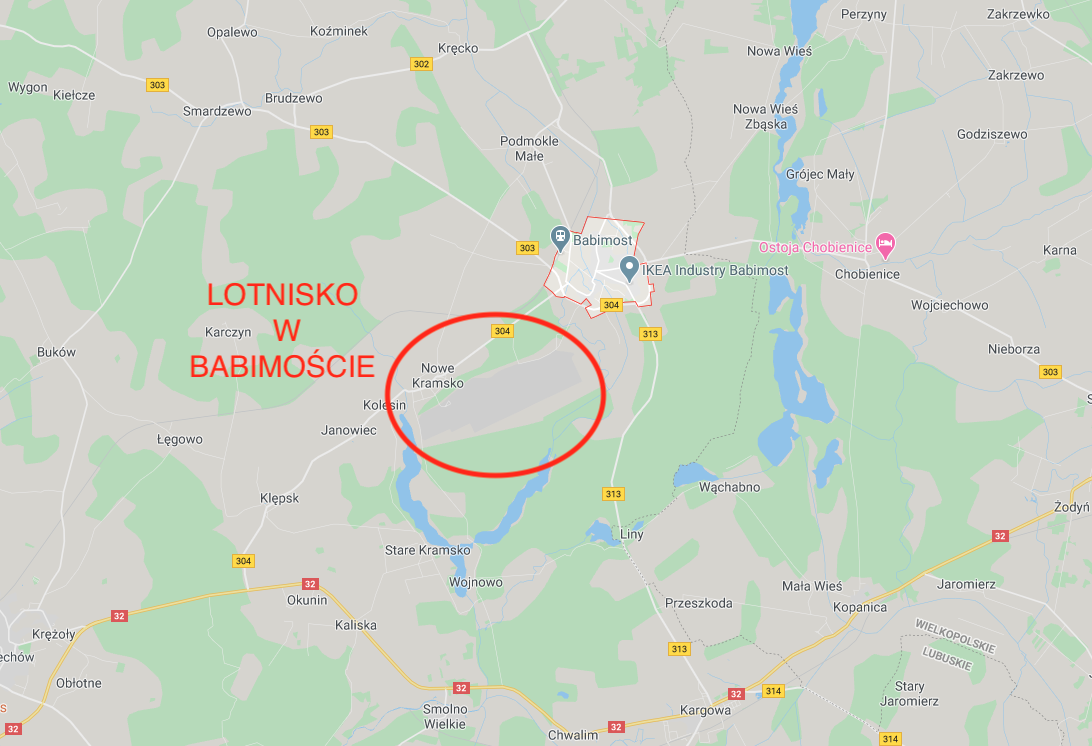
Geographic coordinates: 52.138N 15.799E. Elevation 59 m.
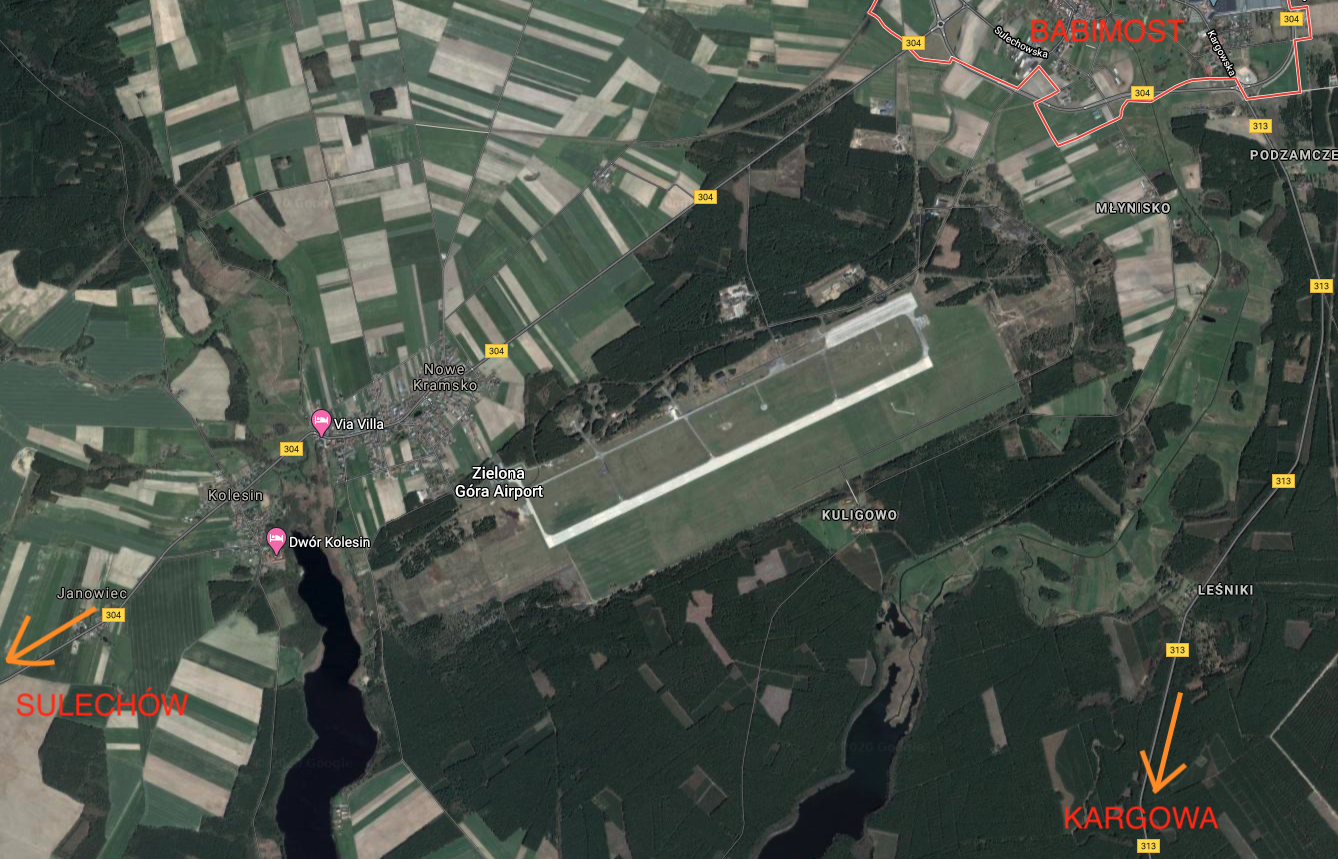
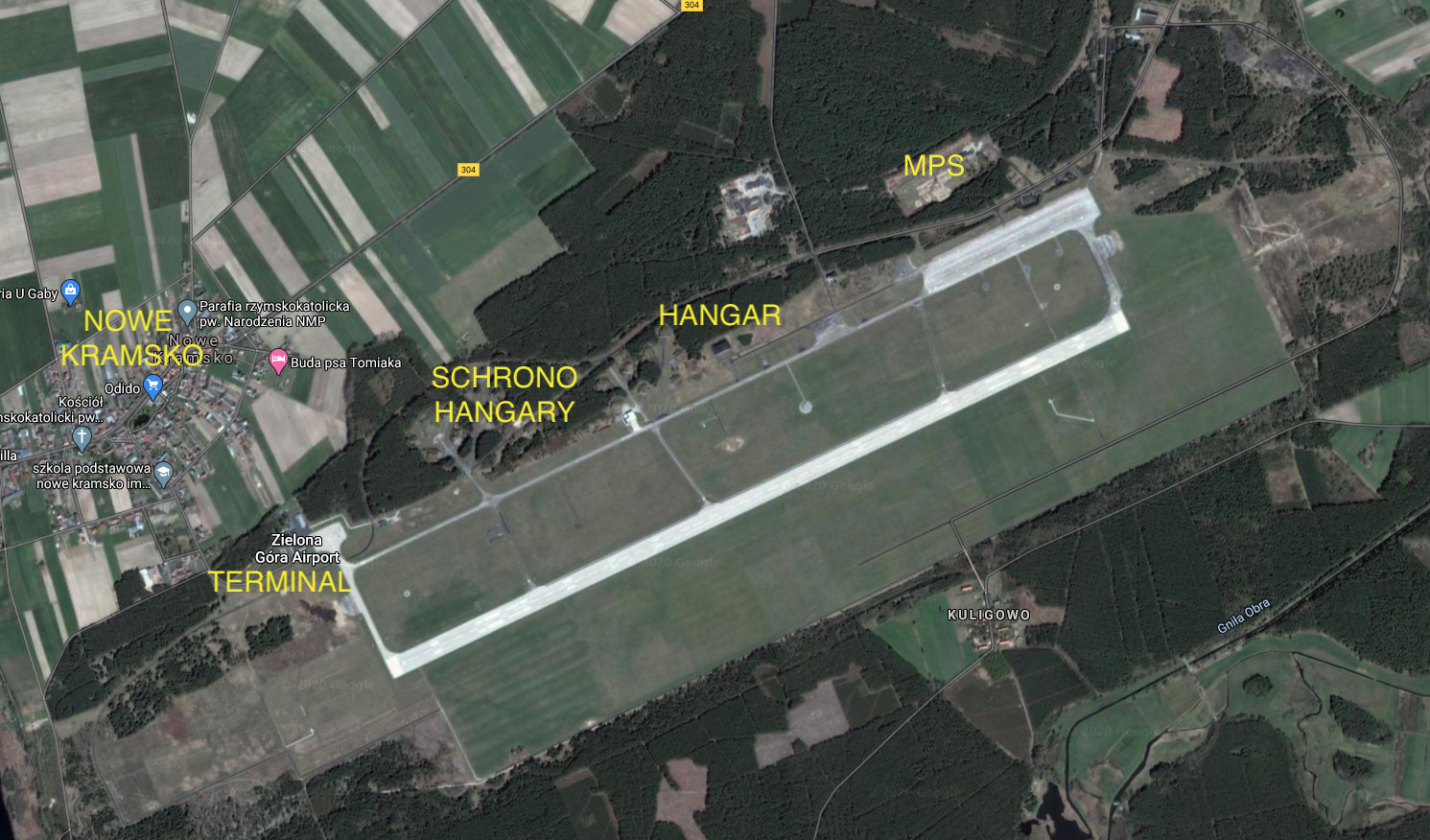
Civil flights from Babimost. 1977 year.
In 1977, the first passenger connection was launched on the Warsaw-Babimost route, and a little later the Gdańsk-Babimost connection. Of course, the timetable included a connection not to Babimost, but to Zielona Góra. Passengers covered the 30 kilometers separating the airport from the center of Zielona Góra by bus. The bus ride was included in the price of the plane ticket. In Zielona Góra, the final bus stop was near the Palm House. PLL LOT used similar solutions in other Polish cities, for example: Koszalin, and the airport in Zegrze Pomorski.
A station (terminal) was also built at Babimost Airport, with a ticket office, passenger check-in point, waiting room and facilities. A foreign check-in point was also opened. The first flights were made twice a week in the summer and once a week in the winter. At the same time, in the spring of 1977, a LOT Polish Airlines office was opened in Zielona Góra, where tickets were purchased. This office closed after 27 years on August 31, 2004.
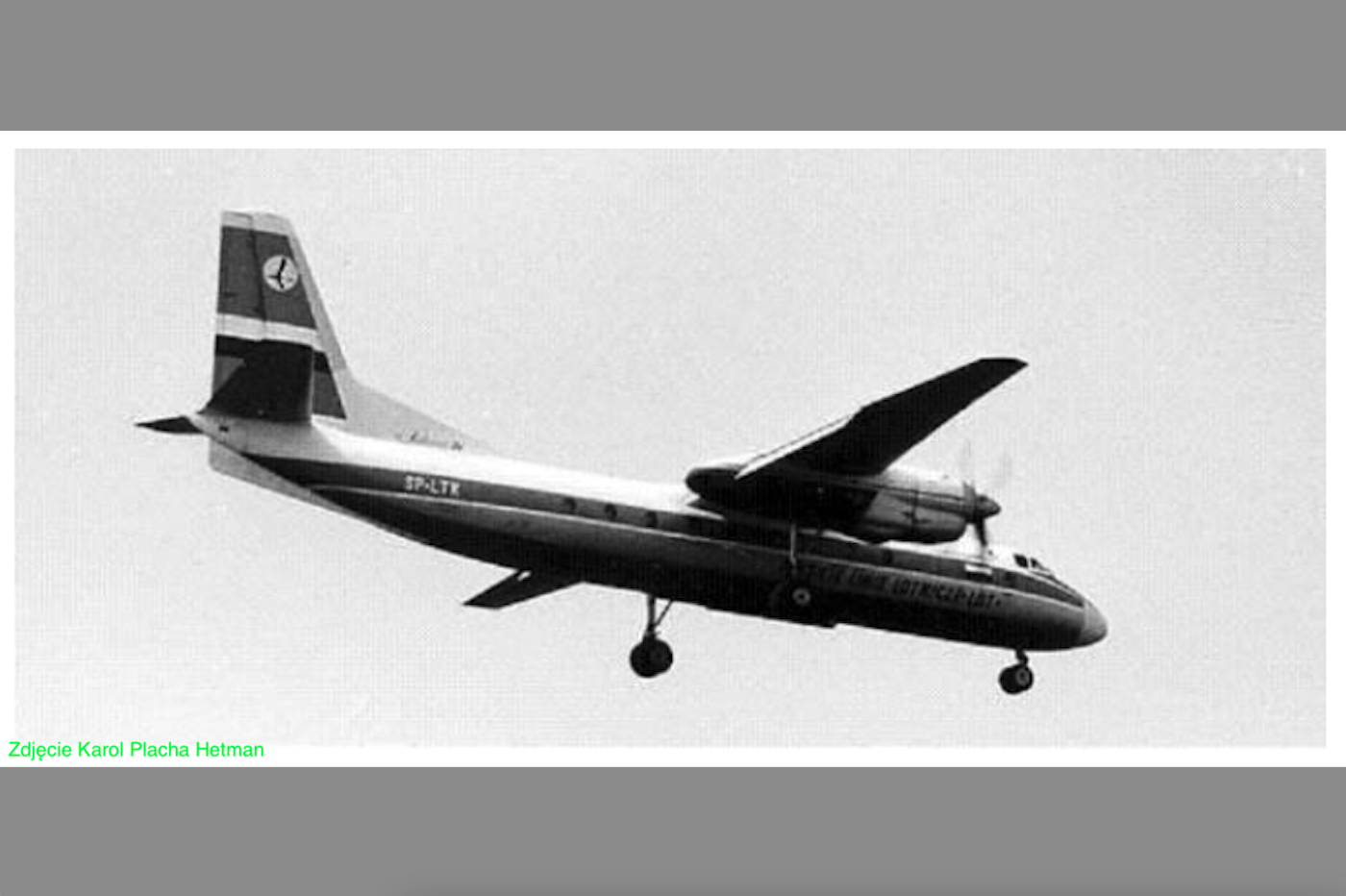
The first planes to service connections from Babimost were Soviet Antonov An-24 turboprops. Occasionally, turboprop, but four-engine Ilyushin Il-18 planes also landed in Babimost.
On December 13, 1981, General Wojciech Jaruzelski declared war on the nation, announcing the introduction of Martial Law and creating WRON (Military Council for National Salvation, called the Crow by the society). Among other things, WRON suspended all PLL LOT flights. Transport also stopped in Babimost. Only after almost two years did PLL LOT planes return to Babimost.
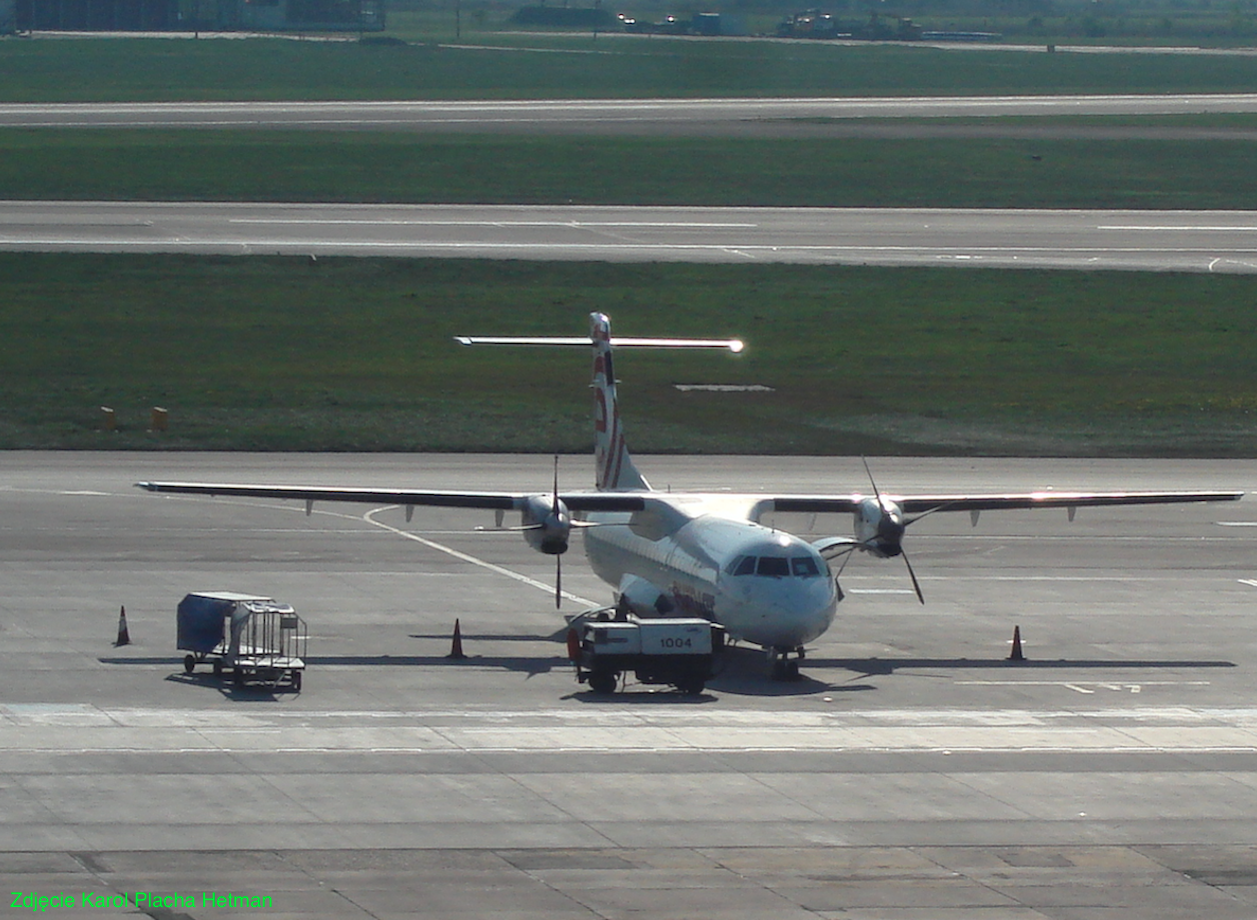
Thanks to the socio-economic changes in Poland, from August 1991, new regional French-Italian ATR-42 and ATR-72 aircraft appeared in the LOT Polish Airlines fleet, replacing the old An-24. New machines began to appear in Babimost. The number of aircraft performing charter flights also increased. In 1997, a daughter company called EuroLOT was established, which systematically took over the network of domestic connections and ATR-42 and ATR-72 aircraft.
The end of the 1990s was a very poor period of passenger transport in Babimost. In 1999, there were 198 passengers and 100 flight operations, and in 2000, 207 passengers and only 36 flight operations. Therefore, at the turn of 2000/2001, EuroLOT began to modify connections in terms of economy. On March 25, 2001, a permanent passenger connection with Okęcie was launched, with a stopover at the Poznań-Ławica airport. So Babimost had a connection with Poznań and Warsaw. This route existed until September 1, 2004, when the EuroLOT management closed this connection for economic reasons and Babimost lost its connection with the world. Only thanks to the persistence of the regional authorities, after a 15-month break, flights resumed on November 28, 2005, twice a day.
After the restrictions introduced by PLL LOT on March 25, 2007, PLL LOT signed a contract with Jet Air to operate the Babimost-Okęcie route. The company operated the route with BAe Jetstream 32 turboprops five times a week. The journey took approximately 75 minutes. Currently (2009), Jet Air operates this connection as its own, independent of LOT Polish Airlines. It also launched a connection to Bydgoszcz.
BAe Jetstream 32 is an English-made aircraft with a length of 15 m and a wingspan of 16 m. It can fly for about 5 hours without refueling. It can reach a ceiling of up to 8,000 m, while developing a maximum speed of over 400 km/h. The plane has two turboprop engines and the highest-in-class cabin with a height of 1.8 m. Passengers are provided with 19 leather seats and drinks and snacks served by an on-board assistant.
Flight timetable (2006):
Start from Babimost at 6.25 - landing in Warsaw 7.45 (Mon-Sat) (from January 3, 5.50 - 7.10) Start from Warsaw 12.20 - landing in Babimost 1:40 p.m. (Mon-Sat, Sun). Start from Babimost at May 14 - landing in Warsaw 15.25 (Mon-Sat, Sun) Start from Warsaw 19.35 - landing in Babimost 20.55 (Mon-Sat, Sun). A one-way flight cost from PLN 172 to PLN 540 (last minute ticket).
In 2008, the connection with Okęcie was modified with a stopover in Bydgoszcz. Transport in Babimost was small and accounted for less than 0.05% of all transport in the Republic of Poland.
In the summer of 2009, Jet Air launched a connection Warsaw - Babimost - Dresden. This means the airport's first foreign permanent connection. Thanks to this, the airport improved its reputation and increased its chances of obtaining EU funds. Currently (2009), services from Babimost operate an 18-seat aircraft. If the number of passengers increases, a machine with 46 seats on board will be provided.
In January 2011, flights to Warsaw were suspended. The airport only served private planes and occasionally military transport planes. From June 2011, direct flights to Warsaw were resumed. Until 2016, this route was served by Sprint Air, and from March 2017, by PLL LOT. In 2019, charter flights were resumed. flights were performed, among others, to Turkey and Antalya airport.
Takeover of Babimost Airport by civilian authorities.
Already in the 1990s, the provincial authorities attempted to obtain ownership of the airport. Initially, the army did not want to get rid of this facility and joint management was proposed. The transport crisis of the late 1990s did not favor efforts to take over the airport.
Again, the period 2001-2004 brought up the topic of taking over the airport by the civil administration. All the more so because in 2004, the Air Force completely transferred the area and facilities to AMW. It then became clear that the Army wanted to sell the airport. Since 2005, Babimost Airport has exclusively performed civil functions; regular and charter passenger flights, medical and rescue flights, private and business flights.
In 2005, the Lubuskie Voivodeship was to buy the airport part of the airport. And more specifically; RWY, DK and parts of hangars. Unfortunately, despite the announcements, the contract could not be signed. AMW informed that the reason for suspending the transaction was the analysis of the development of post-military airports by the Infrastructure Committee of the Sejm. It was already planned to establish a Local Government Company with the participation of PPL. For the land, it was agreed that the fee would be only 5% of the value, i.e. PLN 2,200,000. Financial resources were also secured for 2006; Zielona Góra city hall – PLN 450,000, Voivodeship Marshal – PLN 1,150,000.
We found out in 2007 how to effectively hinder the development of Babimost Airport and many other airports in the Republic of Poland. The then ruling Law and Justice Party developed a draft law on the municipalization of post-military airports and military airports no longer needed by the army. Municipalization meant that airports were taken over by local governments and handed over to companies, without losing control over them. The act was the apple of the eye of most Lubusz politicians. This was where Babimost's power as a civilian and cargo airport was to begin. Unfortunately, the second party, the Civic Platform (Freemasonry), did not like handing over the property to local governments, so this party introduced its own project. After all, you can get rich privately from national wealth. Interestingly, the PiS bill provided for a list of airports in a separate ministerial order. PO criticized this solution very much, and in 2008, when it was already in power in the Republic of Poland, it adopted a law with just such a solution. What hypocrisy. It should also be remembered that at that time the airports in Poznań (Ławica) and Wrocław (Starachowice) could no longer be expanded because there were housing estates nearby. However, Babimost Airport has great opportunities.
In June 2007, the Local Government of Zielona Góra and the Lubuskie Voivodeship and Przedsiębiorstwo Państwowe Porty Lotnicze (airport manager) signed a preliminary agreement to launch a cargo department.
In 2008, the Marshal of the Lubuskie Voivodeship intended to establish the Company. Its shares were directed to City Governments; Babimost, Nowa Sól, Zielona Góra and to private investors. It is planned that by 2012, provincial governments, the Polish Air Navigation Services Agency and airports intend to invest nearly PLN 41 million in Babimost Airport. A schedule of investments has already been prepared - from the largest ones, such as the expansion of the terminal, to the purchase of stairs and machines for painting runways.
A new fuel tank for 30,000 liters is to be built at the airport (currently there are two tanks for 7,500 and 18,000 liters). Many light planes from Paradise came to Babimost to refuel. If it was profitable for them to fly 100 km, it was time to think about a larger gas station. By the end of December 2008; The Cargo clearance building and the garage for handling equipment (wheel bases, heaters, refueling nozzles) were renovated.
In 2009, the DVOR DME radar navigation system was launched at the airport, costing approximately PLN 3.5 million. The ILS system, worth approximately PLN 5 million, will be installed in 2011. Glide path, RWY and DK lighting were installed. The entire area was fenced with a new fence (cost PLN 4 million). Work has already been done to expand the parking lots.
It was only in 2009 that the local government took over Babimost Airport. On February 9, 2009, the Lubuskie Voivodeship Assembly authorized the Voivodeship Board to take over the Babimost Airport in the form of a donation. Thus, the long-standing discussion about whether to take over the airport or leave it in the hands of the Military Property Agency ended. port management. It will be attended by representatives of the marshal, the mayor of Zielona Góra, the Babimost commune, the Airports company, and possibly other companies. The development of Babimost Airport depends on the general development of aviation in Poland. It will be good if the airport is the base of at least one (low-cost) carrier. Moreover, development based solely on passenger transport is unrealistic. Freight traffic must start, and this is very real. Babimost has one advantage - the hard board will accept almost any Boeing. Poznań's Krzesiny not yet.
Babimost Airport is the only Passenger and Cargo Airport in the Lubuskie Voivodeship. The potential area of influence of the airport on passenger traffic includes only approximately 3 million Poles living in western Greater Poland and the Lubuskie Province. This small number of potential passengers limits the dynamics of transport. In 2008, the Port was only in 11th place among Polish Ports.
Distances of the Babimost airport to larger cities in the region: Zielona Góra - 30 km, Gorzów - 80 km, Wolsztyn - 25 km, Sulechów - 14 km, Świebodzin - 26 km, Zbąszyń - 24 km, Nowa Sól - 40 km, Żagań - 71 km , Żary - 77 km, Kostrzyn - 95 km, Głogów - 90 km. The airport is located next to the so-called agglomeration called Lubuskie Tricity, i.e. the City; Sulechów, Zielona Góra and Nowa Sól. It has a total population of approximately 290,000 people. It is well connected by road with the city of Zielona Góra (118,000 inhabitants), located 34 km to the south-west. The travel time is 30 minutes, and it will be even shorter after the Sulechów bypass is put into operation. Most of the access road is highway. The road distance to Poznań is 95 km, of which 65 km is the highway, so the journey does not exceed 60 minutes. But in Poznań there is a well-functioning Ławica Airport. You can also reach the Port by train to Zbąszynek Station and further by buses (microbuses). In the future, it is possible to run a railway line to the port itself using the existing railway siding. The approximate cost of a TAXI from the airport to the center of Zielona Góra (80 km) is PLN 130.
Babimost Airport (Zielona Góra) data. 2020 year.
Address: ZIELONA GÓRA AIRPORT - BABIMOST, PO Box 4, 66-110 Babimost.
Geographical coordinates; 52 degrees 08 minutes N latitude and 15 degrees 47 minutes E longitude. Otherwise; 52.138N 15.799E. Elevation 59 m (194 ft). IATA code - IEG, ICAO code - EPZG. Connectivity - Frequency: TWR 118.750 Mh. Data: ILS LOC IZGA 111.300 MHz, ILS GP/DME 332.300 IZGA CH 50X, DVOR/DME ZLG : 110.650 MHz.
Since 2005, Babimost Airport has exclusively performed civilian functions. It is intended for passenger, freight, sanitary and private-business traffic. It is an airport with regular national air traffic with great prospects. Developing slowly and with difficulty, but systematically.
The airport is located on the provincial road No. 304 from Babimost to Sulechów. Directly from this road runs a road to the Airport, which also has the status of a provincial road and is No. 456. The airport itself can also be reached by a municipal road running from the center of Babimost, approximately 3 km long.
The airport covers an area of 450 ha. Its development consists of; passenger terminal (airport station), cargo terminal, technical security buildings, installations and technical equipment for passenger, cargo and aircraft service, and 16 former aircraft shelters (each with an area of 320 square meters), which became cargo warehouses. There is also a hangar at the airport used by civil aviation.
The airport is equipped with a DS (RWY) 2,500 m x 60 m, direction 06/24. Concrete surface. Approach and runway lights: ALPA-ATA cat.I SFL. Direction 24 - category I precision approach system, "cross" 900 m long LIH, flash axis. Direction 06 - simplified precision approach light system - "cross" with an axis 420 m long and a crossbar at a distance of 300 m from the THR visual approach system. PAPI lights: direction 24-PAPI, glide path angle 3 degrees. at a distance of 306 m from THR 24 on the left side of RWY. direction 06-PAPI glide path angle 3 degrees. 320 m from THR 06. RWY - DS modernized in 1989: new concrete surface, 45÷47 cm thick, with edge and threshold lighting. In 2008, expansion joints were replaced, cracks and surface defects were repaired, and horizontal painting was renewed. Pavement load capacity: PCN 57/R/A/W/T.
The airport has 3 aircraft aprons with a total area of 57,000 m2. The main apron PPS-1 can be used to park aircraft with the code letter F. Currently, aircraft can only use RWY, one taxiway and a platform at the terminal. Taxiing of aircraft is carried out by RWY.
The passenger terminal has a capacity of 150,000 passengers per year. The airport has a free, guarded parking lot, open 24 hours a day. There are no service outlets, ATMs or luggage storage at the airport.
There is a permanent air border crossing at the airport. There is an Airport Police Station at the port. The port is guarded 24 hours a day. It is not subject to noise standards, which means that the port can be used 24 hours a day. Thanks to this, there are no limits on the noise emitted by post-Soviet machines that no longer meet noise standards. However, the airport accepts planes between 06:00 and 22:00.
The airport can handle any passenger and cargo aircraft currently in operation; Boeing 737/747/757/767/777/787, Airbus A300/310/320, Tu-134/154, ATR 42/72, An-40/42, Embraer 170/190, Il-62/76, C- 17, CASA C-295.
The airport has an Air Rescue Service with two combat vehicles. The airport police station was closed when the Airport Security Service was established. The airport has an AWOS7 meteorological device.
It should also be added that, according to the law, part of the area of the former Wax Airfield covered with forests was transferred to the management of the State Forests and is not subject to any other development.
Fuel composition.
A new fuel tank with a capacity of 30 cubic meters is to be installed at the airport (currently there are two tanks for 7.5 cubic meters and 18 cubic meters). At the airport there is a former fuel depot, operated by the army until 2004, which was put up for sale by AMW. Its area is 9,533 hectares, on plot no. 1299/41. The property has a land and mortgage register no. 24548. The plot is fenced, lit, with a water supply and fire hydrant network and internal access roads. There are 20 buildings for various purposes on the premises (workshop, warehouse, MPS pumping station, fuel collection and dispensing points, etc.) with a total usable area of 777 square meters, 3 buildings (shelter, fuel hose stand, MPS entrance ramp) with a total usable area 95 square meters. The capacity of all fuel tanks is 2,150 cubic meters. There are also 3 fire protection tanks with a total capacity of 110 cubic meters. Fuel types: Avgas 100 LL, Jet – A1. Refueling devices: Road tankers: Avgas 100 LL – 7,500 liters, Jet A 1 – 18,000 liters.
Air traffic.
1999, 198 passengers, 100 flight operations. 2000, 207 passengers, 36 flight operations. 2001, 5,624 passengers, 615 flight operations. 2002, 7,598 passengers, 681 flight operations. 2003, 7,813 passengers, 1,237 flight operations. 2004, 3,949 passengers, 400 flight operations. 2005, 427 passengers, 163 flight operations. 2006, 8,316 passengers, 1,107 flight operations. 2007, 6,739 passengers, 714 flight operations. 2017, 10,321 passengers, 987 flight operations. 2018, 15,543 passengers, 1,254 flight operations. 2019, 33,783 passengers, 1,778 flight operations.
Written by Karol Placha Hetman
